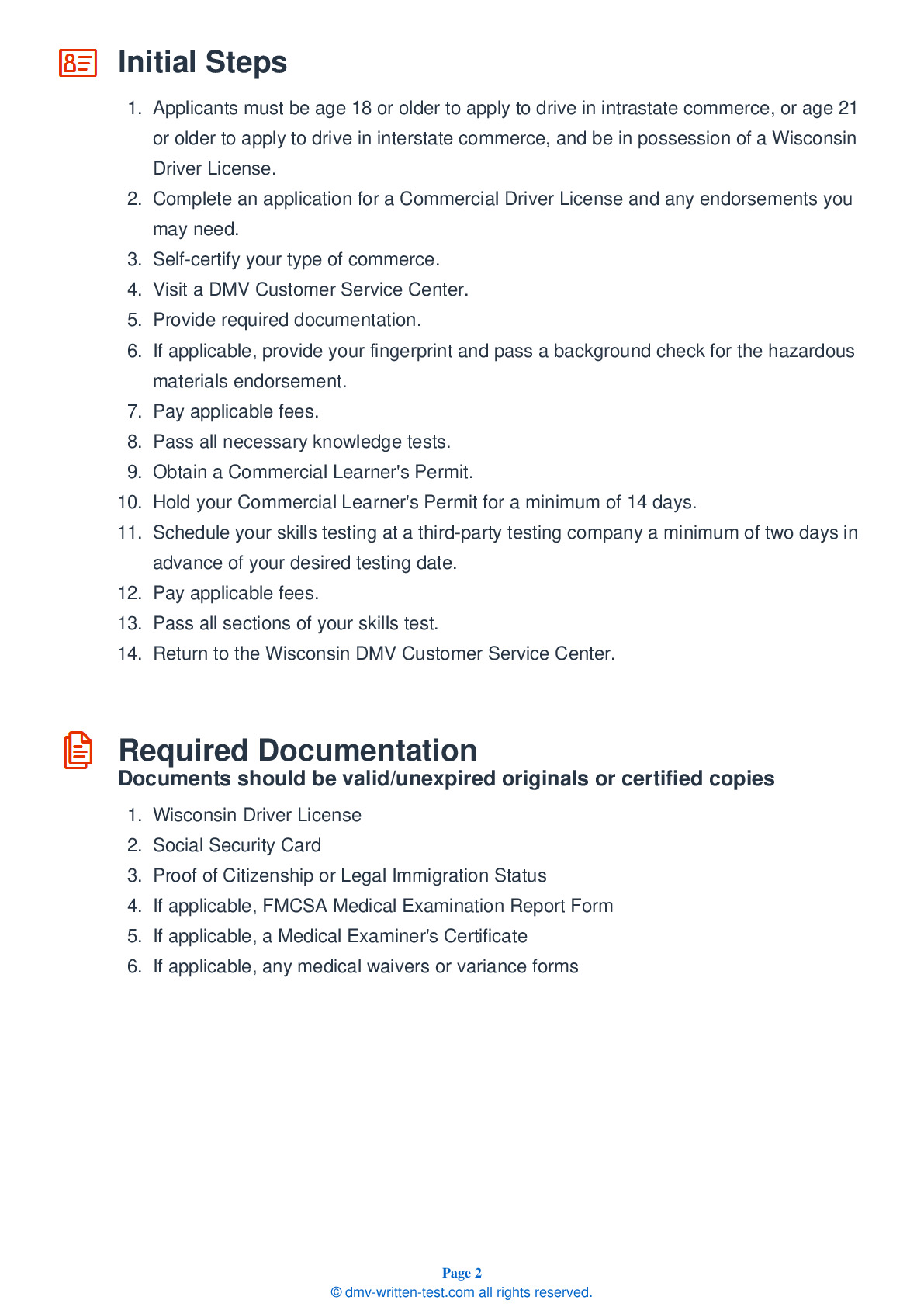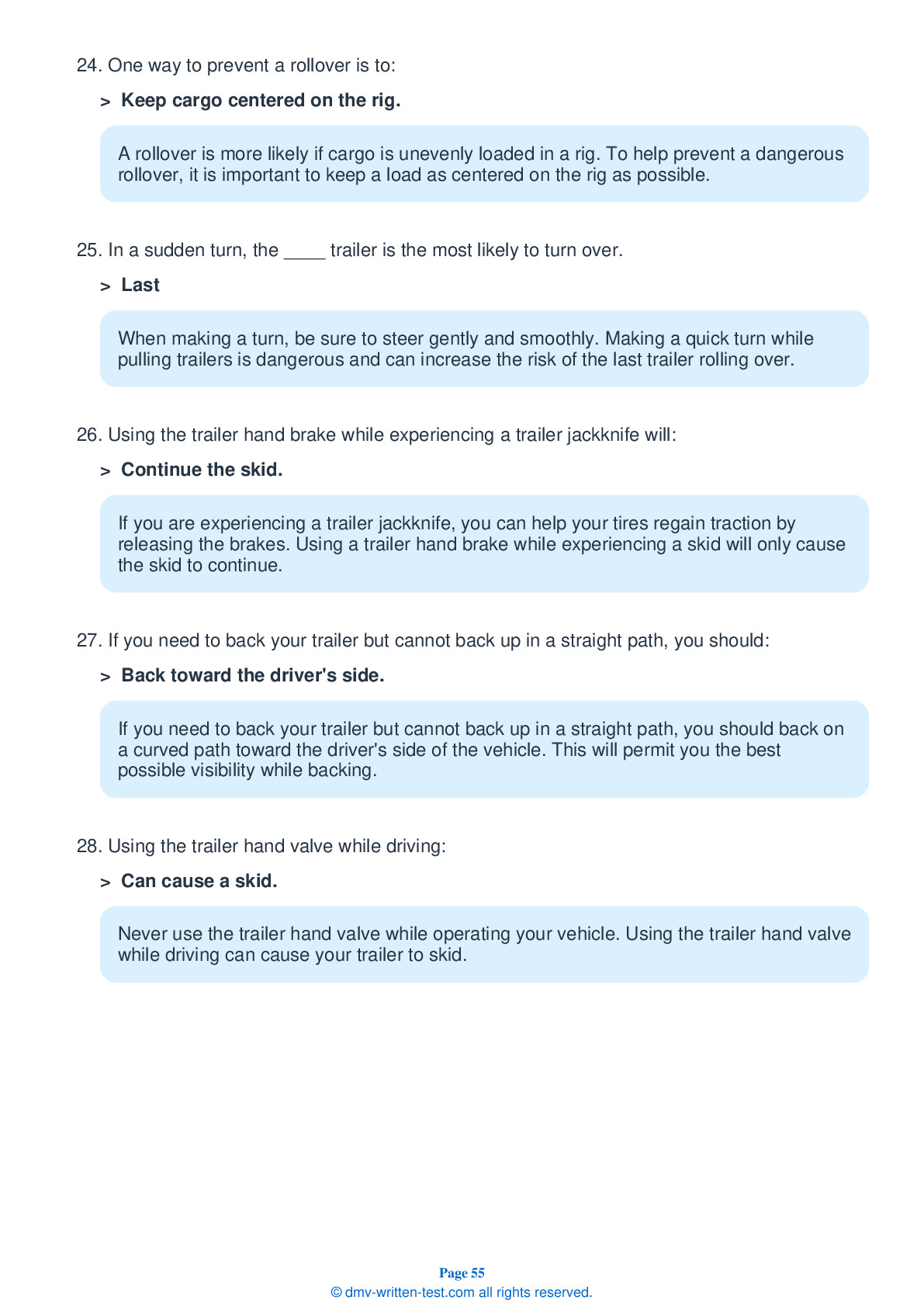Combination
All applicants who are applying for a Class A CDL should be prepared to take the Combination test. This test covers information found in Section 6 of the Wisconsin Commercial Driver's Manual. Section 6 provides the information needed to safely operate tractor-trailers, doubles, triples, and straight trucks with trailers. The test is made up of 20 multiple-choice questions, and applicants will need to correctly answer a minimum of 16 questions to pass. The Combination test is not a replacement for the Double/Triple endorsement test.
Number of Question
Passing Score
8. In a sudden turn, the ____ trailer is the most likely to turn over.
Explanation
When making a turn, be sure to steer gently and smoothly. Making a quick turn while pulling trailers is dangerous and can increase the risk of the last trailer rolling over.
9. If you cannot reverse your trailer in a straight path, you should:
Explanation
If you need to back your trailer but cannot back up in a straight path, you should back on a curved path toward the driver's side of the vehicle. This will allow you the best possible visibility while backing.
10. Place the trailer air supply control in its "emergency" position to test:
Explanation
Be sure to test the trailer emergency brakes before beginning a trip. After ensuring that the trailer rolls freely, you can test the emergency brakes by pulling out the trailer air supply control, or placing it in the "emergency" position. Pull forward slightly with the tractor and make sure the trailer does not move.
11. When you are pulling a trailer, the air supply control lever should be in its ____ position.
Explanation
Tractor protection controls in older vehicles may be operated by levers instead of knobs. If an air supply control is set in its "normal" position, it is properly set for you to pull a trailer.
12. When traveling more slowly than 40 mph, maintain at least ____ of following distance per every 10 feet of your vehicle.
Explanation
At speeds below 40 mph, you should allow at least one second of following distance for every 10 feet of your vehicle. Follow the same formula when traveling at faster speeds, then add one additional second to your following distance. Remember that larger vehicles require more space to stop than smaller vehicles.
13. Rollovers happen when drivers:
Explanation
A rollover happens as a result of a driver taking a turn at too high a speed. Be sure to take turns and curves safely and slowly.
14. When glad hands are coupled, the seals should be pressed together at an angle of:
Explanation




